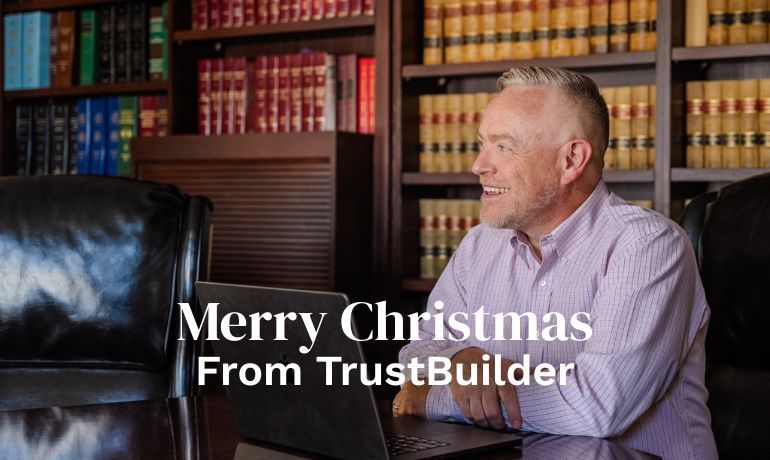How to Measure Trust Within Your Organization
Trust is one of the most powerful drivers of organizational health, whether you run a business, school, athletic team, or any group enterprise. Yet, it can also be one of the most difficult to measure. That's why TrustBuider helps organizations identify and assess trust levels among teams, departments, and leadership tiers to ensure a solid foundation for collaboration, innovation, and growth.
It's a simple concept. Where members of a team or organization trust one another, they feel free to take chances, ask questions, expose problems, and admit difficulties. They are also more willing to put in extra effort, help teammates, and give credit where it's due. When they are confident that their contributions are valued and that other members trust them to know how to do their jobs and to pull their weight, they are motivated to outperform expectations.
If trust within an organization is desirable, how do you measure it and build it? How do you measure something as intangible as trust? Trust does not show up directly on a balance sheet. It manifests itself more subtly: employee retention, workplace culture, and performance outcomes. To break that down, you need to take a structured approach to measuring trust. Doing so can uncover critical insights that enable you to strengthen trust throughout your organization by taking targeted action.
Key Indicators and Methods for Measuring Trust
TrustBuilder has invested much time and research into developing a system that measures trust within an organization.
Ultimately, trust is not just one issue but a combination of behaviors and sensibilities that define relationships, both between individual members of an organization and between those individuals and the leadership of their organization. Personal experiences inform how people measure trustworthiness when evaluating co-workers, supervisors, and even whole companies.
Below are several different facets of gauging trust that TrustBuilder employs to provide your organization not only with a measure of trust but also with a reliable road map of where to go to build or rebuild trust:
1. Employee Surveys and Trust Indexes
Surveys are one of the most effective tools for understanding and building trust. These assessments can include targeted questions about leadership credibility, communication transparency, fairness, and support. Tools like the Trust Index or custom-designed questionnaires can provide both quantitative and qualitative data.
At TrustBuilder, we map our framework to your organization and develop customized questions to pinpoint how your customers (or employees) feel about your organization. Consistently tracking survey responses over time helps organizations identify trends and areas for improvement.
2. Focus Groups and Listening Sessions
Quantitative data is valuable, but it doesn't tell the whole story. Focus groups and listening sessions allow employees to express concerns, share real-life experiences, and provide context around trust-related issues. These sessions help uncover nuances behind fill-in-the-bubble or short-answer survey responses and offer rich, actionable intelligence and provide eye-opening insights into how different employees perceive trustworthiness. They can also help organizations better understand the culture of trust that exists (or does not) within their teams, departments, or organizations overall.
3. Behavioral and Cultural Observations by Trained Professionals
Trust often reveals itself in observable behaviors. Look for signs of a high-trust environment, such as open collaboration, cross-functional teamwork, and low levels of micromanagement. HIgh achievement and employee satisfaction indicate a high trust environment. Conversely, behaviors like secrecy, high turnover, and frequent conflict may indicate trust gaps. Persistent problems in areas such as team performance or employee retention are manifestations of a low-trust environment.
If a high-trust culture is not being cultivated, no amount of personnel changes or incentives will lead to better outcomes. TrustBuilder consultants are trained to assess organizational dynamics through observation and cultural assessments, offering not just an external perspective on trust in action but actionable measures that can be implemented to reorient the culture toward building a high-trust environment.
4. Performance Metrics and Retention Data
Certain business metrics can act as proxies for organizational trust. These include:
- Employee retention and turnover rates
- Engagement scores
- Productivity and innovation metrics
When trust is strong, these indicators reflect positive performance. Tracking changes in these metrics alongside trust assessments helps establish meaningful correlations that pinpoint where the problems are.
Turning Insights Into Action with TrustBuilder
Measuring trust is only the first step in building it. Understanding the data and taking appropriate actions based on what the data tells you is how change occurs.
At TrustBuilder, we help organizations translate assessment results into strategic initiatives. From leadership training and communication strategies to team-building workshops and cultural development programs, we provide the tools to build and sustain trust across your organization, yielding benefits in productivity, innovation, employee satisfaction, staff retention, and, ultimately, your bottom line.
If you're ready to understand and improve the trust dynamics in your workplace, reach out to TrustBuilder today. We'll help you design a customized assessment strategy and equip your team with the insights and skills needed to build a thriving, trust-driven culture.
Recent Posts


![SYNTHESIS [2026] in light blue text.](https://lirp.cdn-website.com/f969fb45/dms3rep/multi/opt/TB_Horizontal_White-b3af8ef2-1920w.png)








